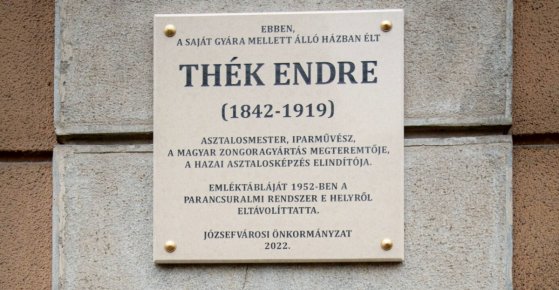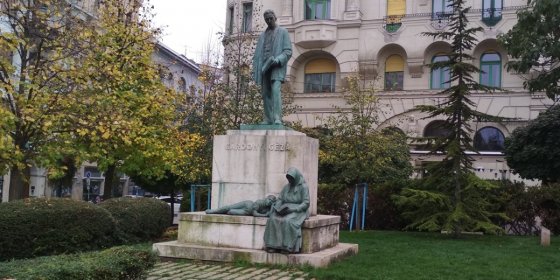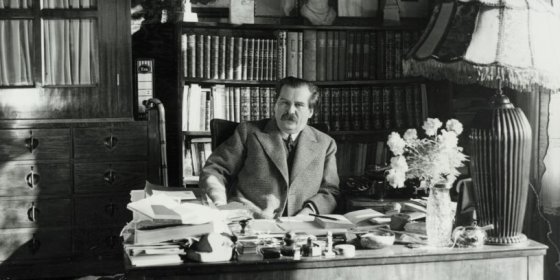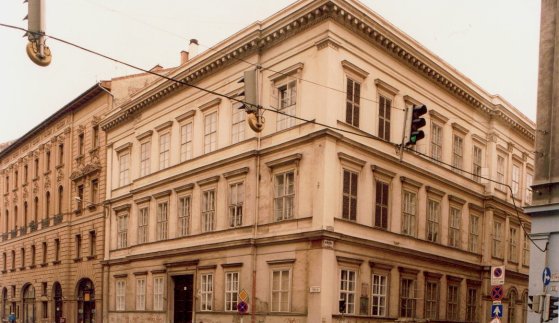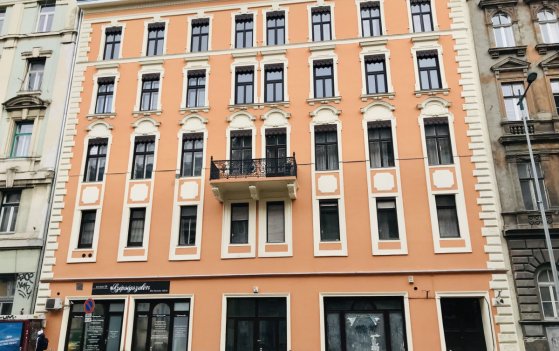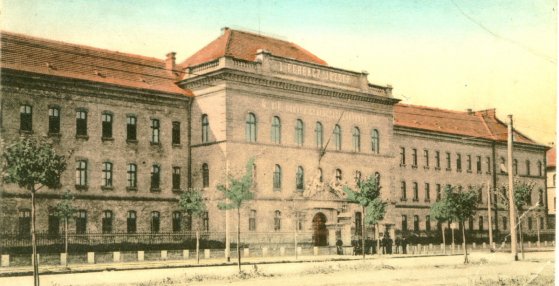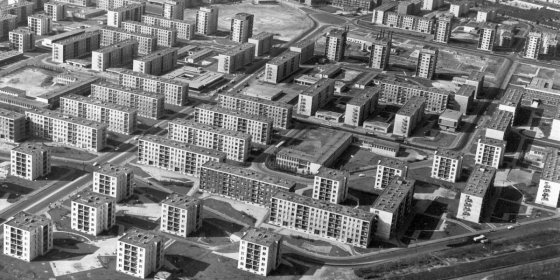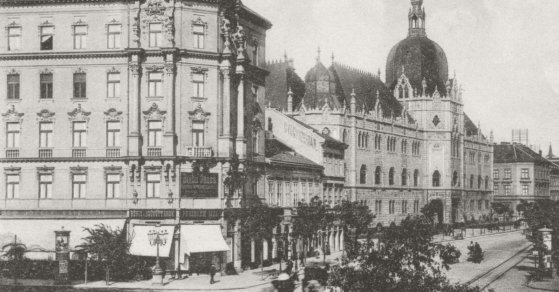 The „intertwined history” of the bridges and the city of Budapest
Which ideas and events have shaped the fate of bridges of Budapest and the cityscape? Alongside many other interesting facts, this question is also answered this newly published book by the Budapest City Archives, which introduces the history of bridges in Budapest.
The „intertwined history” of the bridges and the city of Budapest
Which ideas and events have shaped the fate of bridges of Budapest and the cityscape? Alongside many other interesting facts, this question is also answered this newly published book by the Budapest City Archives, which introduces the history of bridges in Budapest.
Üllői Road
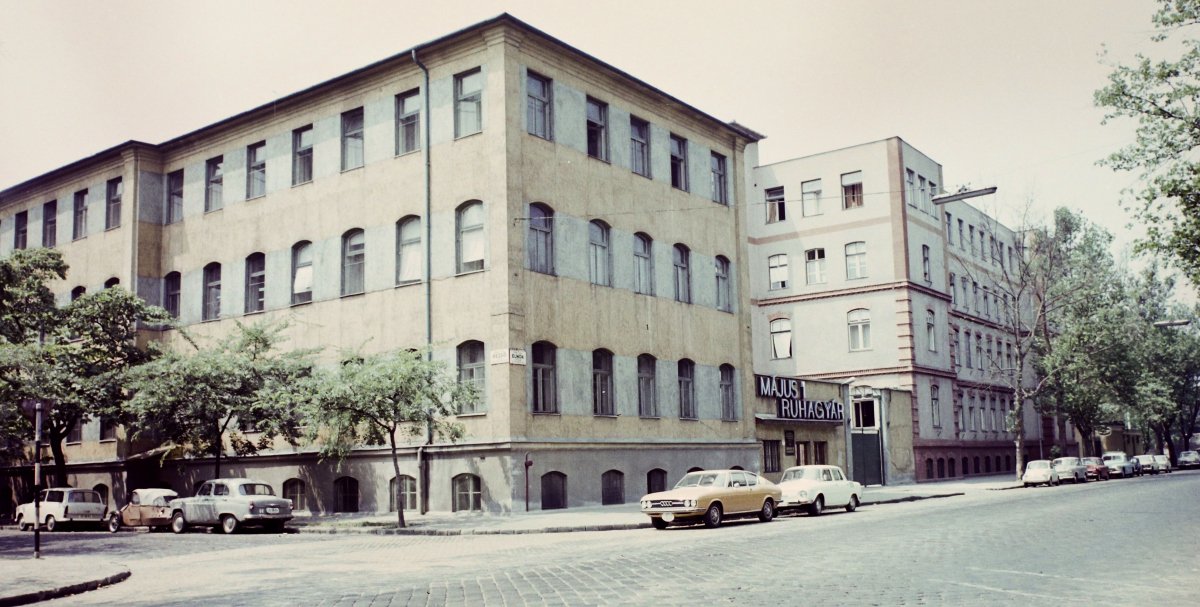 The story of a famous clothing factory in Józsefváros
The story of a famous clothing factory in Józsefváros
March 27, 2023 at 11:00 AM
Close to Nagyvárad Square, at the junction of Elnök Street and Orczy Road, there is a complex of buildings with a huge floor area. There is an office building, a jewellery store, a tailor shop, a communications technology company, a photography and video recording company, and even a table tennis club. In the 1960s and 1970s, one of the largest clothing manufacturers in the country operated behind the walls, but the story did not begin then but at the end of the 19th century.
Endre Thék's memorial plaque was inaugurated in Józsefváros
November 8, 2022 at 11:30 AM
Endre Thék was the biggest figure in Hungarian furniture production. In honour of the master woodworker, furniture and piano manufacturer, a memorial plaque was placed on the building under 66C Üllői Road in the 8th District, where his home was. At the current inauguration, the original plaque removed in 1952 was replaced.
The hermit of Eger was a regular guest of Pest's coffee houses - Géza Gárdonyi died a hundred years ago
October 30, 2022 at 10:00 AM
Although his name lives on in the public consciousness as a hermit of Eger, Géza Gárdonyi was a regular figure in the cultural and literary life of Budapest at the turn of the 19th century. He was an eyewitness to the development of the city, as a journalist he reported for years from the Old House of Representatives, he visited the famous artist's salon of the Fesztys, but he was also considered a regular guest at the Centrál, the Valéria or the New York Café. Pestbuda now remembers Géza Gárdonyi, who died 100 years ago today.
The Pest homes of Zsigmond Móricz, who died 80 years ago
September 15, 2022 at 9:00 AM
Not only Dezső Kosztolányi (Üllői úti fák [Trees of The Üllői Road]) but also Zsigmond Móricz could come to our mind when we think of Üllői Road. One of the most famous authors of 20th-century Hungarian realist prose literature lived for twenty years in his home on Üllői Road, where such defining works as Tragédia [Tragedy] and Légy jó mindhalálig [Be Faithful Unto Death] were written. After the suicide of his first wife, the writer moved to an apartment building on Fővám Square with his daughters and then lived for a short time in an apartment in a pre-modern style house on Bartók Béla Road. Zsigmond Móricz, whose name is preserved by public works, public institutions, literary scholarships and numerous public spaces, died eighty years ago.
Only a house around the corner - An important place in the cultural history of Hungary on Üllői Road
May 30, 2022 at 2:00 PM
The residential house at 17 Üllői Road, on the corner of Erkel Street, does not stand out from its surroundings, it has no special decorations, it is proportionate and simple. Yet it is important and worth presenting because it was the home and meeting place of prominent personalities who had a tremendous impact on Hungarian literature, theatrical life, fine arts, and architecture.
The building that was once home to books - The Révai Brothers' Bookstore on Üllői Road
February 5, 2022 at 9:00 AM
The section of Üllői Road between Kálvin Square and Nagyvárad Square has several buildings that are important not only for their architectural values but also for their cultural history. Fortunately, over the past few years, several of these have been successfully renovated as originally planned. The house at 18 Üllői Road also belongs to this group, it was renovated after many decades of deterioration. Visitors probably do not know that when this house was rebuilt in 1898, it housed the Révai Brothers' Bookstore.
Where there used to be a barracks, there is now a sports hall - The history of the Franz Joseph infantry barracks
January 20, 2022 at 9:00 AM
Opposite Népliget stood a military object for more than a hundred years, the sight of which largely determined the intersection of Üllői Road and Könyves Kálmán Boulevard. Today it is replaced by a huge handball hall, which is currently hosting the first international sporting event. The history of the new building is still very short, but it offers a good opportunity to get to know the old one.
The first panel building in Budapest was completed sixty years ago – A new era began next to Üllői Road
February 18, 2021 at 11:30 AM
In Hungary, a housing shortage defined the 1950s. Due to forced industrialization, thousands moved to the cities, chiefly Budapest and the newly created idealistic cities. However, there was not enough vacant housing in these cities. The communist government believed industrialised house construction to be the solution. As a result, the first panel building in Budapest was completed on the József Attila Housing Estate sixty years ago.
The birth of Lottóház – Historic buildings lost to the 1956 revolution
December 10, 2020 at 2:00 PM
A small plaza can be found at the junction of Ferenc Boulevard and Üllői Road. It was named in 1996. It is known as Angyal István Park. There is no inscription to indicate this despite a statue of a paper aeroplane being erected in 2014, and most passers-by do not know that the city honoured one of the heroes of the 1956 revolution, the leader of the Tűzoltó Street insurgents, with the square 24 years ago. And perhaps even fewer know that before 1956 the square did not even exist, but was covered by three residential buildings standing side by side.
More articles
 The „intertwined history” of the bridges and the city of Budapest
Which ideas and events have shaped the fate of bridges of Budapest and the cityscape? Alongside many other interesting facts, this question is also answered this newly published book by the Budapest City Archives, which introduces the history of bridges in Budapest.
The „intertwined history” of the bridges and the city of Budapest
Which ideas and events have shaped the fate of bridges of Budapest and the cityscape? Alongside many other interesting facts, this question is also answered this newly published book by the Budapest City Archives, which introduces the history of bridges in Budapest.
 The Bridge Report, which brought a turning point in the history of Budapest
A travel report that changed the history of Pest and Buda, as well as Hungary. The little book contributed to the change of half a thousand years of legal customs and the implementation of an investment of unprecedented size and technical quality. This book was The Bridge Report [Hídjelentés in Hungarian].
The Bridge Report, which brought a turning point in the history of Budapest
A travel report that changed the history of Pest and Buda, as well as Hungary. The little book contributed to the change of half a thousand years of legal customs and the implementation of an investment of unprecedented size and technical quality. This book was The Bridge Report [Hídjelentés in Hungarian].
 Drama on the university wall - The heroic monument was planned 95 years ago
In the constant hustle and bustle of the Egyetem Square in Pest, the students may not even notice the monument that decorates the short section of wall between the church and the central building of ELTE. However, it commemorates their predecessors, the heroes who fought for their country in World War I, and those who heroically helped them. The first design of the dramatically collapsing soldier was born in 1928, ninety-five years ago.
Drama on the university wall - The heroic monument was planned 95 years ago
In the constant hustle and bustle of the Egyetem Square in Pest, the students may not even notice the monument that decorates the short section of wall between the church and the central building of ELTE. However, it commemorates their predecessors, the heroes who fought for their country in World War I, and those who heroically helped them. The first design of the dramatically collapsing soldier was born in 1928, ninety-five years ago.

